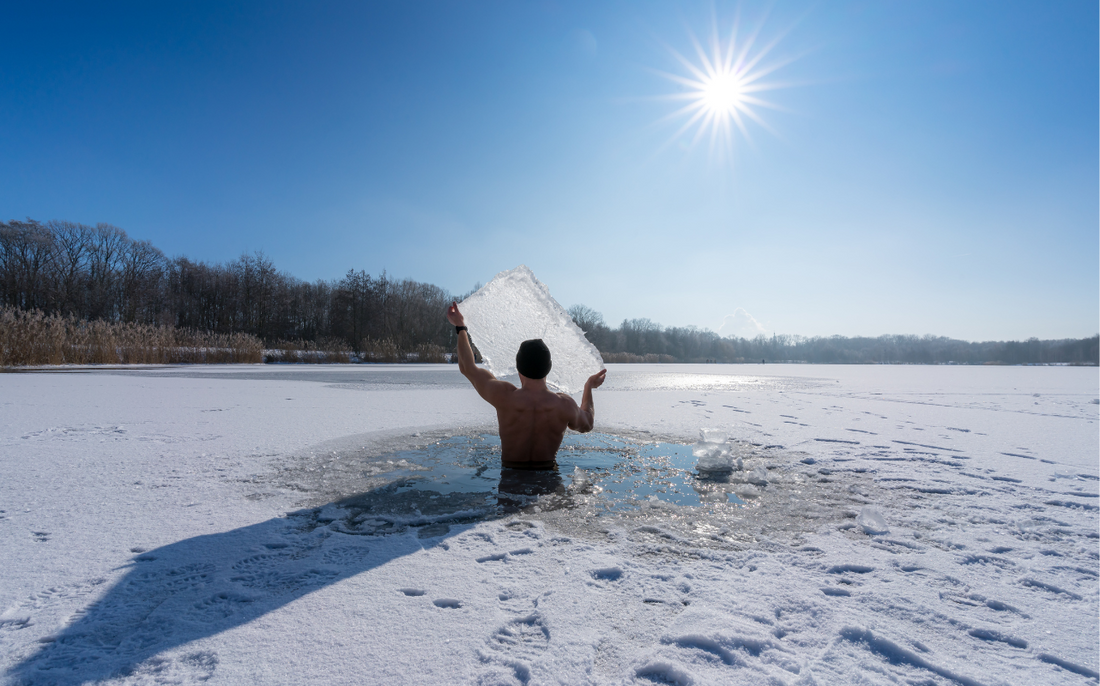For some, the idea of submerging yourself in freezing cold water sounds like a terrible idea, but for others it is the peak test of mental fortitude and physical achievement. But what are the benefits behind the cold-water plunge? Let’s dive into it…
Taking the Plunge
To understand the potential benefits of the icy practice, we must first understand how it is done safely and effectively. As the name suggests, a cold plunge is simply submerging yourself – either partially or fully – in cold water. There are a few ways to do this, including centres you can go to if you prefer a more controlled environment, or buy your own plunge tank – which may be a little on the pricey side. Alternatively, you could fill your bathtub at home with cold water, or find a cold lake or the ocean.
It is vitally important that you are mindful of your surroundings. DO NOT plunge in moving water such as rivers or canals, as you may be swept up in the current.
Your plunge can be as long or as short as is comfortable for you, but most beginner start with multiple sessions of 30-60 seconds, with a break in between to build up tolerance. More experienced plungers can go up to 5 or 10 minutes in one session!
It’s worth testing the temperature of the water before you being, it should be around 50F (10 Celsius) or below to get the best results. But what are the benefits of this practice?
Benefits of the Ice Bath
The cold immersion therapy is very popular in the fitness community as a way to reduce soreness in the muscles post-workout. It can also soothe the symptoms of heat-stroke in endurance athletes.
There is also evidence to support benefits relating to stress management, and those who participate feel a sense of connectivity to their overall health and wellbeing. Cold water may also impact inflammation, reducing stiffness and pain, also linked to depression and anxiety. However, researchers are in agreement that more research in this area is needed to be able to link these benefits to the practice with any degree of certainty.
Risks of Cold Plunging
It is recommended that beginners to cold plunging do so under supervision of another, and even more experienced participants ought to do so with the utmost care. There are a few risks of plunging into cold water that it is worth being mindful of:
- Hypothermia: the prolonged exposure to cold temperatures that will start to reduce the body’s internal temperature. Typically, the body’s temperature will start dropping after 1 to 3 minutes in temperature below 70F (21 Celsius)
- Cold water shock: the sudden immersion in cold water can cause the body to go into a state of ‘shock’, which can include increased heart rate and breathing, gasping or confused thinking
- Loss of feeling: lower temperatures can cause numbness, a loss of feeling in the limbs making actions such as swimming or treading water more difficult. These symptoms can worsen the longer the person is exposed to such temperatures
It is advised to avoid the practice all together if you have a history of cardiac or pulmonary diseases, due to the undue stress placed on the body during a cold plunge.
However, as long as you are aware of the potential risks of the freezing water, and have cleared any uncertainties with a licensed healthcare professional, you may experience a calmness of mind and boost in energy from braving the chilly temperatures, as well as a strong sense of accomplishment.

